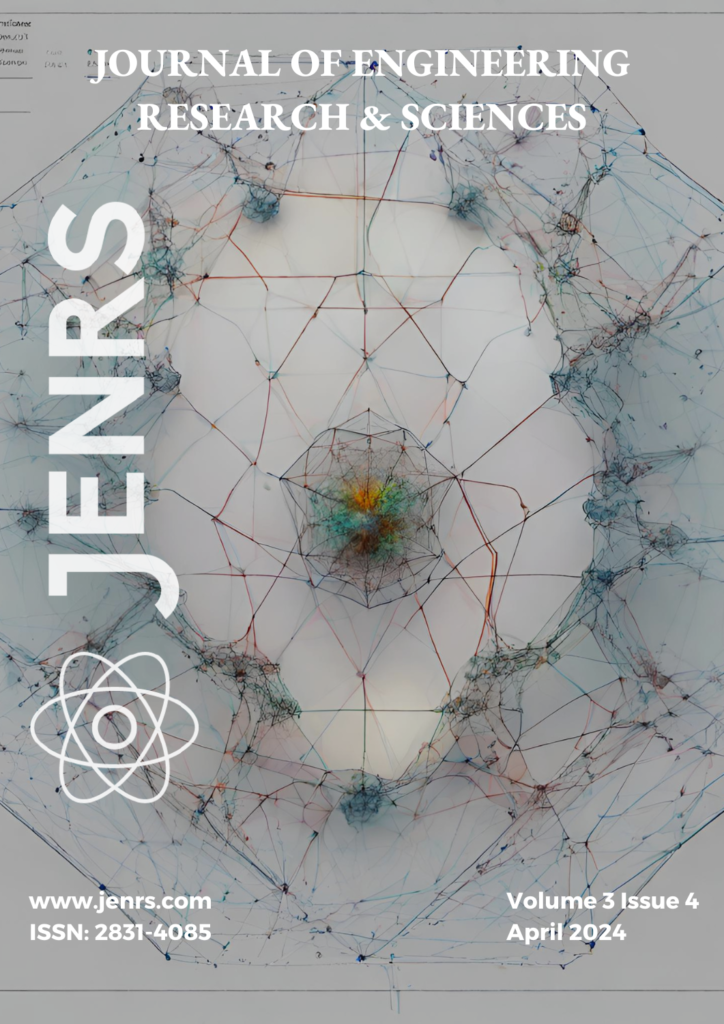
Volume 3, Issue 4
Download Complete Issue
This issue presents four innovative studies that tackle diverse challenges across multiple domains. One paper introduces a novel modular approach for precise estimation of elbow joint motion, with potential applications in human-machine interfaces. Another explores the efficacy of e-assessment platforms, integrated with AI-powered tools, in enhancing student learning experiences and performance. A comprehensive investigation delves into the factors influencing riverbank slope stability along the Yellow River in China, underscoring the crucial role of vegetation. Additionally, a computational model is developed to identify comorbidities associated with COVID-19, offering prospects for improved patient management strategies. These interdisciplinary researches exemplify the transformative potential of cutting-edge methodologies and technological integration, advancing scientific understanding and practical solutions across biomechanics, education, environmental science, and healthcare.
Front Cover
Publication Month: April 2024, Page(s): i – i
Editorial Board
Publication Month: April 2024, Page(s): ii – ii
Editorial
Publication Month: April 2024, Page(s): iii – iv
Table of Contents
Publication Month: April 2024, Page(s): v – v
Estimation of Elbow Joint Movement Using ANN-Based Softmax Classifier
Abdullah Y. Al-Maliki, Kamran Iqbal, Gannon White
J. Engg. Res. & Sci. 3(4), 1-9 (2024);
Estimating the natural voluntary movement of human joints in its entirety is a challenging problem especially when high accuracy is desired. In this paper, we build a modular estimator to estimate the elbow joint motion including angular displacement and direction. Being modular, this estimator can be scaled for application to other joints. We collected surface Electromyographic (sEMG) signals and motion capture data from healthy participants while performing elbow flexion and extension in different arm positions and at different effort levels. We preprocessed the sEMG signals, extracted features array, and used it to train an ANN-based Softmax classifier to estimate the angular displacement and movement direction. When compared against the motion cap-ture data, the classifier achieved estimation accuracy ranging from 80% to 90% with a resolution of 5°, which translates into Pear-son Correlation Coefficient (PCC) ranging from 0.91 to 0.95. Such high PCC values in mimicking the voluntary movement of the upper limb may help toward building intuitive prostheses, exoskeletons, remote-controlled robotic arms, and other Human Ma-chine Interface (HMI) applications.
Comprehensive E-learning of Mathematics using the Halomda Platform enhanced with AI tools
Philip Slobodsky, Mariana Durcheva
J. Engg. Res. & Sci. 3(4), 10-19 (2024);
The method of assessment affects on learning by determining how students manage their time and prioritize subjects. It is widely accepted that students may demonstrate different skills in different assessment formats. The authors demonstrated how e-assessment through the Halomda educational platform can not only improve student learning outcomes, but also enrich their learning experiences. In addition, it is shown how ChatGPT integrated with two new math exploration tools into proprietary Chat-Mat™ module, can help students learn at home and in the classroom, as well as support teachers in their daily work of reviewing student assignments. The outcomes of teaching courses with Halomda not only reveal impressive student performance on final exams but also illustrate a strong correlation between exam scores and weekly assignment grades.
Numerical Analysis of Riverbank Slope Stability Considering Rainfall, Vegetation and Water Level Fluctuation
Md. Tanvir Ahsan, Ji-Peng Wang, Saidov Mirzo Sibgatullovich, Abdelali Dadda, Salikhov Farid Salokhiddinovich
J. Engg. Res. & Sci. 3(4), 20-31 (2024);
The occurrence of landslides and slope instability along riparian zones has been a recurrent phenomenon of substantial concern globally. This paper presents a comprehensive investigation of riverbank slope stability utilizing soils from the Yellow River in China, with a particular emphasis on the effects of water level fluctuations, precipitation, and vegetation. The research examines the interplay of multiple factors influencing slope stability by integrating empirical data from laboratory testing with numerical analysis using Plaxis3D. Salient findings indicate that vegetation significantly enhances riverbank slope stabilization, especially during precipitation events, and that water level fluctuations profoundly impact the mechanical behavior and integrity of riverbank slopes, particularly during rapid drawdown stages. The study underscores the significance of these aspects in riverbank protection and infrastructure development. Despite the rigorous methodology employed, the work acknowledges limitations in numerical modeling and laboratory test scale, highlighting the necessity for more advanced research in geotechnical engineering.
Computational and Bioinformatics Approaches for Identifying Comorbidities of COVID-19 Using Transcriptomic Data
Shudeb Babu Sen Omit, Md Mohiuddin, Salma Akhter, Md. Hasan Imam, A. K. M. Mostofa Kamal Habib, Syed Mohammad Meraz Hossain, Nitun Kumar Podder
J. Engg. Res. & Sci. 3(4), 32-41 (2024);
Comorbidity is the co-existence of one or more diseases that occur concurrently or after the primary disease. Patients may have developed comorbidities for COVID-19 that cause harm to the patient’s organs. Besides, patients with existing comorbidities are at high risk, since mortality rates are strongly influenced by comorbidities or former health conditions. Therefore, we developed a computational and bioinformatics model to identify the comorbidities of COVID-19 utilizing transcriptome datasets of patient’s whole blood cells. In our model, we employed gene expression analysis to identify dysregulated genes and curated diseases from Gold Benchmark databases using the dysregulated genes. Subsequently, Tippett’s Method is used for COVID-19’s P-value calculation, and according to the P-value, Euclidean distances are calculated between COVID-19 and the collected diseases. Then the collected diseases are ordered and clustered based on the Euclidean distance. Finally, comorbidities are selected from the top clusters based on a comprehensive literature search. Applying the model, we found that acute myelocytic leukemia, cancer of urinary tract, body weight changes, abdominal aortic aneurysm, kidney neoplasm, diabetes mellitus, and some other rare diseases have correlation with COVID-19 and many of them reveal as comorbidity. Since comorbidities are in conjunction with the primary disease, thus similar drugs and treatments can be used to recover both COVID-19 and its comorbidities by further research. We also proposed that this model can be further useful for detecting comorbidities of other diseases as well.

